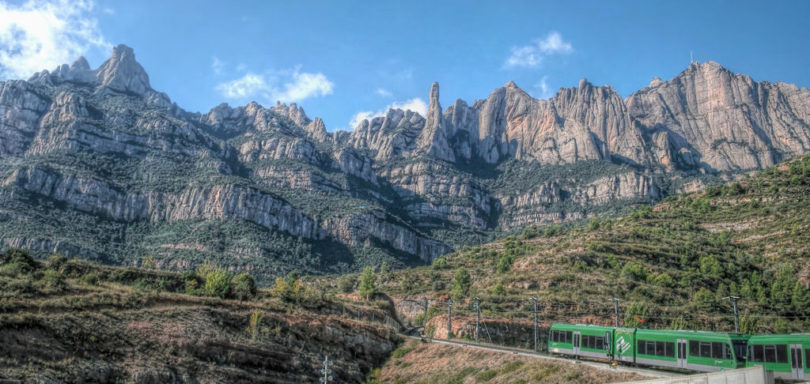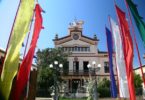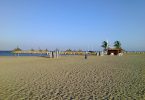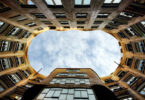To the north of Barcelona across the plane of the river Llobregat lies the stunning, jagged-peaked mountain of Montserrat. There are many ways to reach the monastery and summit, and for rail enthusiasts or tourists simply looking for breathtaking scenery, the rack railway and funiculars represent the best choice. More information on these railways can be found below.
Table of Contents
Montserrat rack railway



Photo credit: Keith Laverack via VisualHunt / CC BY-ND
The original mountain railway of Montserrat was inaugurated in 1892. Its aim was to connect the monastery with the town of Montrisol below. Previously, the monastery had only been served by stagecoach, so the task of providing supplies and a transport route for pilgrims was becoming more difficult as journeys to the sacred site increased. In building the railway, the journey time to the summit was reduced from over 3 hours to 1 hour and 5 minutes. This made the return journey from Barcelona to the monastery possible within one day. The railway had six stations in its heyday, and completed 12 runs per day, connecting the monastery with the train line between Barcelona and Manresa. It was a steam railway serviced by 8 locomotives, which would haul trains of up to 21 carriages during busy periods. During the Civil War, the rack railway was used to transport war wounded to the Montserrat hospital. Despite its initial popularity and undoubted usefulness, a serious accident involving 3 locomotives occurred in 1953, and this spelled the start of its decline. With less and less passengers, and running at a loss, the government decided the railway was unsustainable, and it made its final journey in 1957.
With an increase in tourism and the congestion which ensued, a project to build a new rack railway was begun in 2000. This modern rack railway (the Cremallera de Montserrat) was inaugurated in 2003 and is operated by the Abt rack system, whereby a central rail with a groove is used to pull the train up steep gradients by means of a cog attached to the base of the locomotive. It can be combined with conventional sections of track as is the case here. The conventional section of the line runs from Montrisol to Montrisol Vila over the impressive Pont del Centenari bridge spanning the river Llobregat and running for 480m. The railway rises 550m with a maximum gradient of 15.6%. The carriages have large panoramic windows which allow for stunning (and at times jaw-dropping) views down the mountainside. A combined ticket from Barcelona Plaça Espanya is available for €29.50 and also includes a journey on the funiculars of Montserrat (see below).
Montserrat funiculars



Photo credit: SantiMB.Photos via Visualhunt / CC BY-NC-ND
From the Monastery station at the summit of the rack railway, it is possible to ride on 2 different funicular railways. The Funicular the de la Santa Cova descends from the monastery station to the Santa Cova shrine below. This is where the image of Mare de Deu was found by shepherds, according to legend. There is also an important sculpture exhibition here, which includes work by Gaudí, and a museum about the history of the funiculars. This funicular is 262m long with a rise of 118m, 56.5% maximum gradient and a single track with a passing loop. It opened in 1929 and has been owned and operated by FGC since 1986. It underwent complete renovation in 1991. Tickets cost €4 for a return journey.
Most stunning of all perhaps is the Funicular de Sant Joan (pictured), the steepest funicular in Spain with a maximum gradient of 65%. The steep rise transports you 503m in 6 minutes gaining 248m in height. From the top station, the summit peaks are easily attainable as are many breathtaking walks. This funicular was built in 1918 and modernised to increase capacity in 1926. It is also owned by FGC and was further modernised in 1997. A return journey is €10.50, or €13.00 when combined with the Santa Cova funicular.





















Leave a Comment